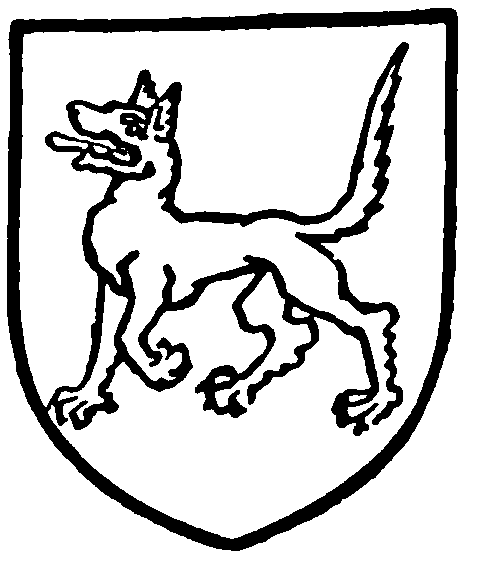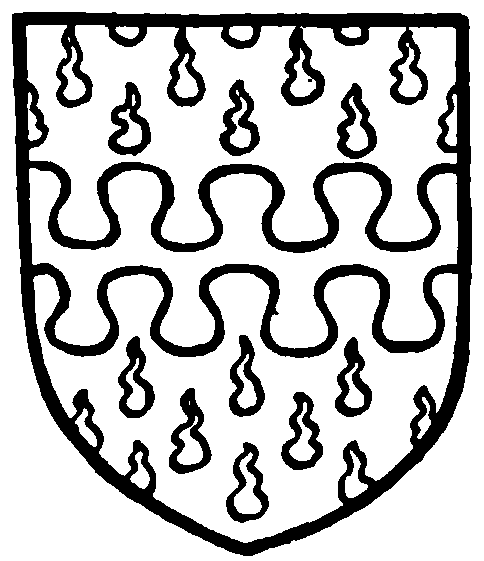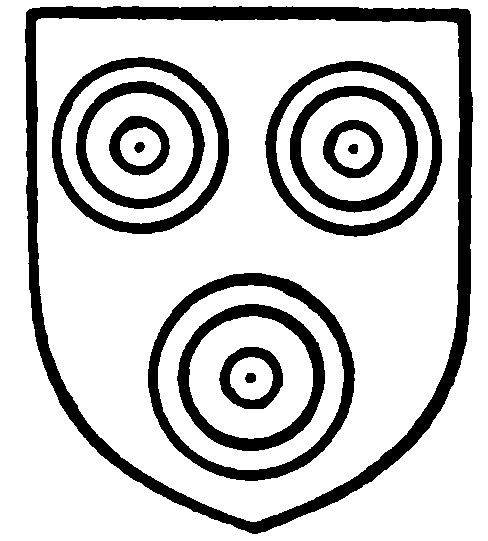A History of the County of Lancaster: Volume 3. Originally published by Victoria County History, London, 1907.
This free content was digitised by double rekeying. All rights reserved.
'Townships: Woolston with Martinscroft', in A History of the County of Lancaster: Volume 3, ed. William Farrer, J Brownbill (London, 1907), British History Online https://prod.british-history.ac.uk/vch/lancs/vol3/pp331-334 [accessed 19 April 2025].
'Townships: Woolston with Martinscroft', in A History of the County of Lancaster: Volume 3. Edited by William Farrer, J Brownbill (London, 1907), British History Online, accessed April 19, 2025, https://prod.british-history.ac.uk/vch/lancs/vol3/pp331-334.
"Townships: Woolston with Martinscroft". A History of the County of Lancaster: Volume 3. Ed. William Farrer, J Brownbill (London, 1907), British History Online. Web. 19 April 2025. https://prod.british-history.ac.uk/vch/lancs/vol3/pp331-334.
In this section
WOOLSTON WITH MARTINSCROFT
Ulfiton c. 1147; Wlfiton, 1175–82.
Woolston to the west and Martinscroft to the east extend along the bank of the River Mersey, and together form a joint township containing an area of 1,566½ statute acres, of which Woolston proper has 1,225. (fn. 1) The township lies wholly upon the upper mottled sandstone of the bunter series of the new red sandstone. The high road from Warrington to Manchester passes through it, and the Woolston New Cut, a short canal belonging to the Manchester Ship Canal, passes through Woolston and shortens the waterway of the Mersey and Irwell Canal by avoiding some of the numerous windings of the River Mersey. In 1901 there were in the joint township 484 persons. There are a number of small landowners here, the land being let in small tenements.
There is a parish council.
The flat country is divided into fields with rather meagre hedgerows and scanty trees. The alluvial and sandy soil appears fertile, yielding good crops of potatoes and turnips, oats, wheat, and clover, whilst many a marshy corner is devoted to the cultivation of osiers for the manufacture of potato-hampers and 'skips.' In the north of the district there is a considerable patch of mossland, and here too there is a good deal of clay in the surface soil. By the river there are moist pastures. The inhabitants are entirely employed in agricultural labour and basketmaking.
MANOR
The descent of WOOLSTON corresponds with that of the neighbouring manor of Poulton. Both were in 1094 bestowed upon the abbey of St. Peter of Shrewsbury by Count Roger of Poitou, (fn. 2) and both passed—probably by purchase—to the lord of Makerfield about the reign of Henry II. From that date Woolston was held by a number of free tenants as of the barony of Newton in Makerfield. The names of those existing between 1175 and 1182 are recorded in a charter of Ralph, abbot of Shrewsbury, granting to them in fee the riddings or assarts of the 'Eyes' lying within a ditch by the water of Mersey for 21 pence yearly, and one 'land' or acre strip from each tenant for ever as an obit. (fn. 3) In 1292 twothirds of the manor were held by Robert de Woolston, whose ancestors had been enfeoffed by Robert Banastre, sometime lord of Newton in Makerfield. (fn. 4) The remaining third part was held by Richard de Moston, lord of Poulton, in right of his wife Alice, daughter of Gilbert de Haydock, whose ancestor had likewise been enfeoffed by Robert Banastre. (fn. 5) This third part descended in the same succession as the manor of Poulton. Some considerable part of it was held in 1292 by Richard son of Emma de Woolston by the yearly service of 8s. (fn. 6)

Woolston of Woolston. Argent, a wolf passant sable.
Robert son of Orm de Woolston, who was living in 1293, (fn. 7) had issue by Alice his wife four sons, Adam, father of Agnes, by his wife Ellen, whom he divorced; (fn. 8) Richard his heir, living in 1313, when he was suing Richard de Moston and Alice his wife for making sale and destruction in their common wood and turbary in Woolston; (fn. 9) Simon, living in 1309; (fn. 10) and John, described as John son of Robert Ormeson (fn. 11) in 1318, when Hugh de Woolston recovered against him and Alice his mother two messuages in this vill. (fn. 12) In 1326 and 1332 Richard de Woolston, Richard and Robert de Martinscroft, Simon son of Robert, Henry le Wolf and John de Hepay were the principal owners of land. (fn. 13) In 1349 Emma, relict of Richard de Woolston, was claiming her dower in the manor of Woolston against Robert de Woolston her son and Alice his wife, and in six messuages, 36 acres of land, and 30s. of rent in this vill against Alice, relict of Henry le Wolf. (fn. 14) Robert de Woolston 'of the Fernyheued,' died before 1367, in which year Agnes his relict was sued by Thomas de Southworth for a messuage and 100 acres of land which she held in dower, and for waste which she had made in the wood of Woolston. (fn. 15)
In 1359 the abbot of Shrewsbury brought a writ of novel disseisin before the justices at Lancaster against Robert son of Robert de Woolston touching tenements here, but did not prosecute his writ. (fn. 16) Four years later the abbot successfully traversed the finding of an inquest taken for the king to the effect that one of the king's progenitors had given a plat of land, called Wyldegreve, a fishery in the manor, and 20s. of rent in Woolston, to find a monk to celebrate divine service daily for ever in the chapel of Wyldegreve for the souls of the kings of England, which chantry had been withdrawn for many years past, the lands being worth yearly 24s. and the fishery 20s. An inquest found that the abbot and his predecessors had held the tenements time out of mind of the gift of Ranulf, earl of Chester, in free alms, whereupon judgement was given for the abbot with restitution of the tenements, the issues, and the fishery. (fn. 17)
The descent of the family of Woolston is somewhat obscure during this time. (fn. 18) In 1401 Hugh de Woolston was in possession of the manor. (fn. 19) By the marriage of his daughter Annabel (or Elizabeth) to John de Hawarden of Hawarden, co. Flint, the manor passed to the last-named family. (fn. 20) In 1432 John Hawarden and Elizabeth his wife were freeholders in Poulton and Woolston. (fn. 21) His son Thomas Hawarden (fn. 22) had a son Thomas, who died before 1513, in which year Joan his wife gave 20 marks for the marriage of her son John, which Sir Thomas Boteler claimed in respect of lands held of him in Warrington. (fn. 23) In 1523 John Hawarden was amerced for not appearing at a court held at Warrington to do his suit for the same lands. (fn. 24) He died in 1556–7 seised of this manor and of lands in Halewood. (fn. 25) Adam his son, aged thirty years in 1556–7, entered his pedigree at the visitation of William Flower in 1567. (fn. 26) The manor was settled upon him by his father John Hawarden by fine in 1548. (fn. 27) He died 6 February, 1596–7, (fn. 28) his only son having predeceased him. Elizabeth, daughter of Adam, had married Alexander, son and heir of Edward Standish of Standish, in 1575, (fn. 29) and in 1581 Adam Hawarden and Alexander Standish had conveyed the manor and family estates by fine to trustees, (fn. 30) as Alexander Standish and Elizabeth his wife likewise did in 1609. (fn. 31) The manor subsequently descended with Standish until March, 1870, when the hall was sold to the present owner, Mr. John Bennett, by the Standish trustees, with the consent of the late Charles Henry Lionel Widdrington Standish. The 'manorial rights, if any,' were reserved by the vendors. (fn. 32)

Hawarden of Woolston. Argent, guttée de poix and a fesse nebuly sable.

Standish of Standish. Sable, three standing dishes argent.
In 1278 Robert son of Alan le Norreys of Halsnead and Agnes his wife claimed estovers in Robert de Woolston's wood in Woolston, which they had been used to enjoy. (fn. 33) John son of the same Robert in 1323 and again in 1332 sought to recover a messuage and two oxgangs of land here from Richard son of Hugh de Woolston. (fn. 34)
The family of Southworth of Samlesbury held an estate here from an early period. In 1432 Thomas Southworth died seised of lands held of John Hawarden and Elizabeth his wife. (fn. 35) Richard Southworth died in 1472, and Christopher his son in 1487, seised of the same, held of Thomas Hawarden by the yearly rent of 1d. In 1502 Ralph Anderton claimed the premises. (fn. 36) The subsequent descent is unknown.
Ralph Culcheth died in 1564 seised of a small estate here, which he held of Adam Hawarden in socage by a yearly free rent of 3s. (fn. 37) William his bastard son and heir alienated it in 1567 to Thomas Walmesley of Showley, (fn. 38) who died seised of the same in 1584. (fn. 39) It descended in 1612 to Thomas, son and heir of Robert Walmesley of Coldcotes, (fn. 40) and probably passed with the other estates of this family.
MARTINSCROFT
MARTINSCROFT (fn. 41) was, as the name suggests, a several enclosure within the manor of Woolston. Gilbert de Martinscroft held land here in the time of Edward I, (fn. 42) and Richard his son was one of the largest contributors here to the subsidy of 1326. (fn. 43) By his wife Agnes, daughter of John de Shaw, he had issue two daughters, Godith and Margery, who with their husbands were claiming a messuage and lands here in 1346 against Robert, son and heir of the said Richard de Martinscroft, and Richard's widow, Margery de Edgeworth. (fn. 44)
Richard Houghton, Ellen Hawarden, Adam Hawarden, and Richard Bruch, as landowners in Woolston, contributed to a subsidy in Mary's reign. (fn. 45) The only freeholder recorded in 1600 was Alexander Standish. (fn. 46) Sir Peter Legh and Ralph Standish were the landowners paying to the subsidy in 1628, in Poulton and Woolston. (fn. 47) Richard Booth was in 1653 allowed to contract for two-thirds of his estate sequestered for his recusancy. (fn. 48) Richard Booth and William Caldwell, reedmaker, as 'Papists,' registered small estates in 1717. (fn. 49)
A family named Willme resided at Martinscroft in the seventeenth and eighteenth centuries; one of them, John Willme, who died in 1767, was a mathematician and astrologer. (fn. 50)
The land-tax returns of 1787 show that Edward Standish, Henry Pickering, and — Strickland were the chief owners of the soil.
The enclosure award (with plan) for the township is preserved at the County Council offices, Preston.
A Wesleyan Methodist chapel was built at Martinscroft in 1827.
The Hawarden family and their successors, adhering to the Roman Catholic faith at the Reformation, afforded shelter to the missionary priests during the times of proscription. (fn. 51) The domestic chapel of Woolston Hall was served by the English Benedictines until the beginning of last century, (fn. 52) when it was demolished. The present church of St. Peter, opened in 1835, is in the hands of secular clergy. (fn. 53)